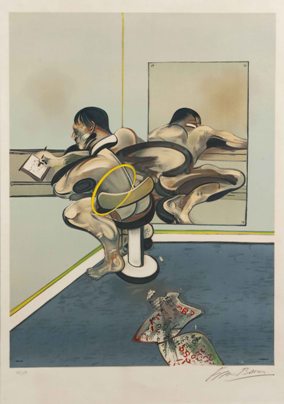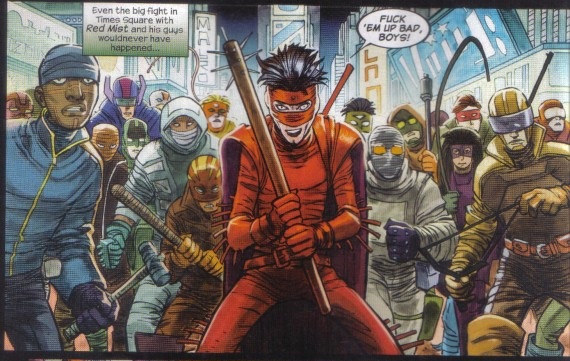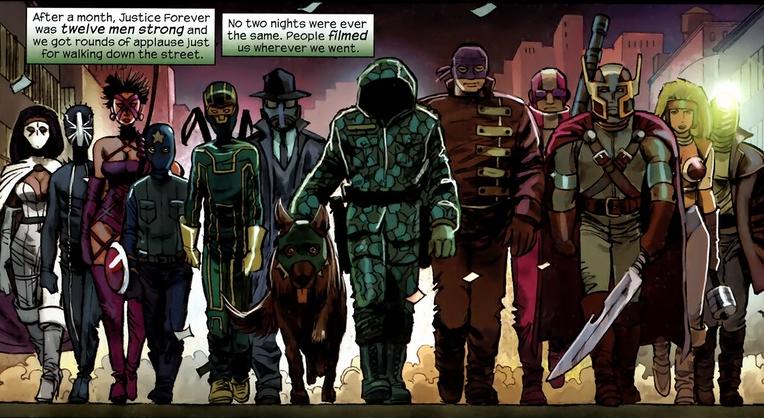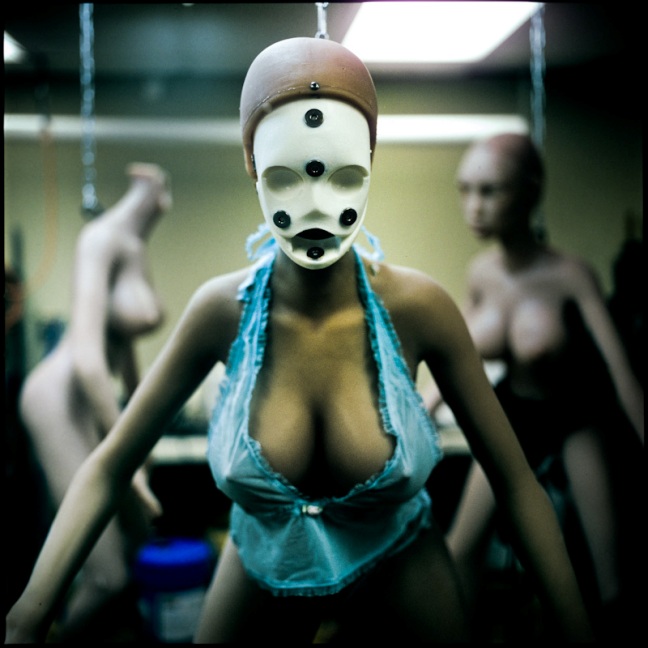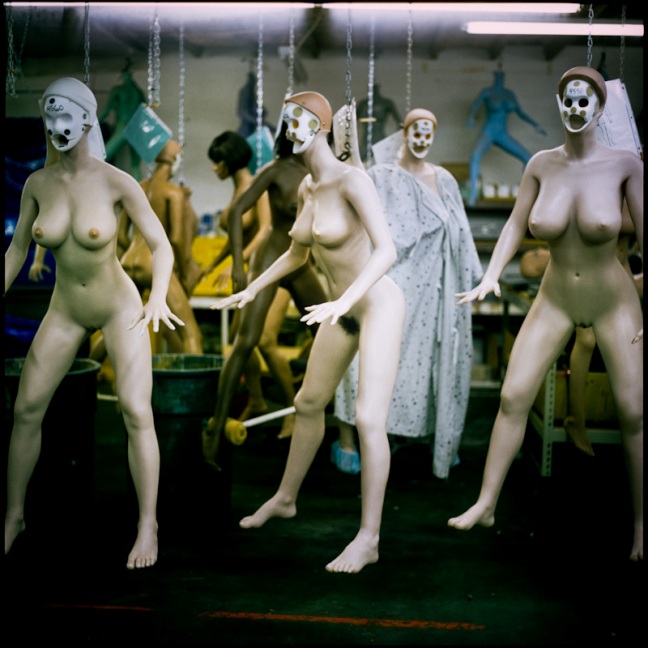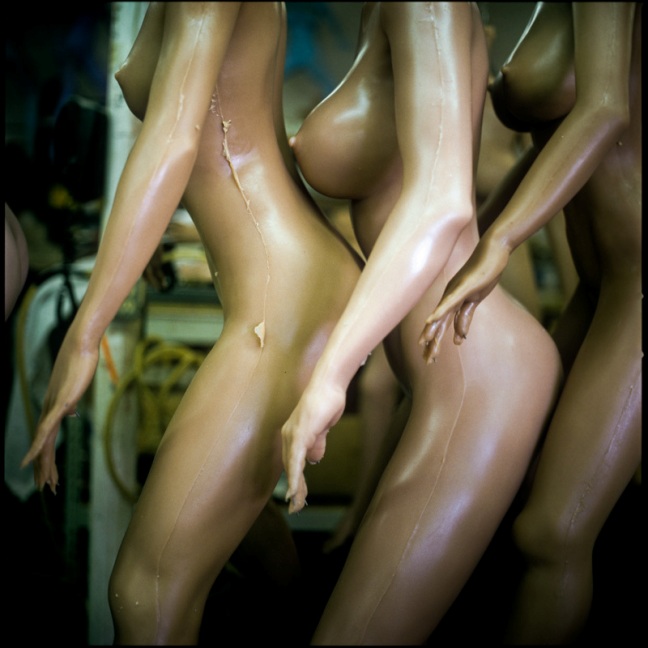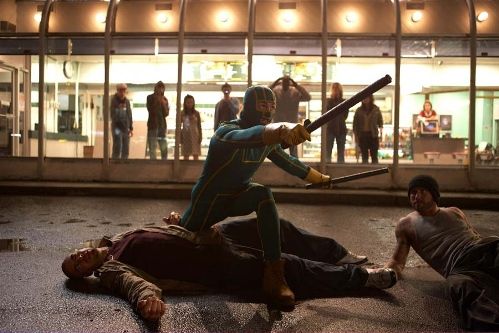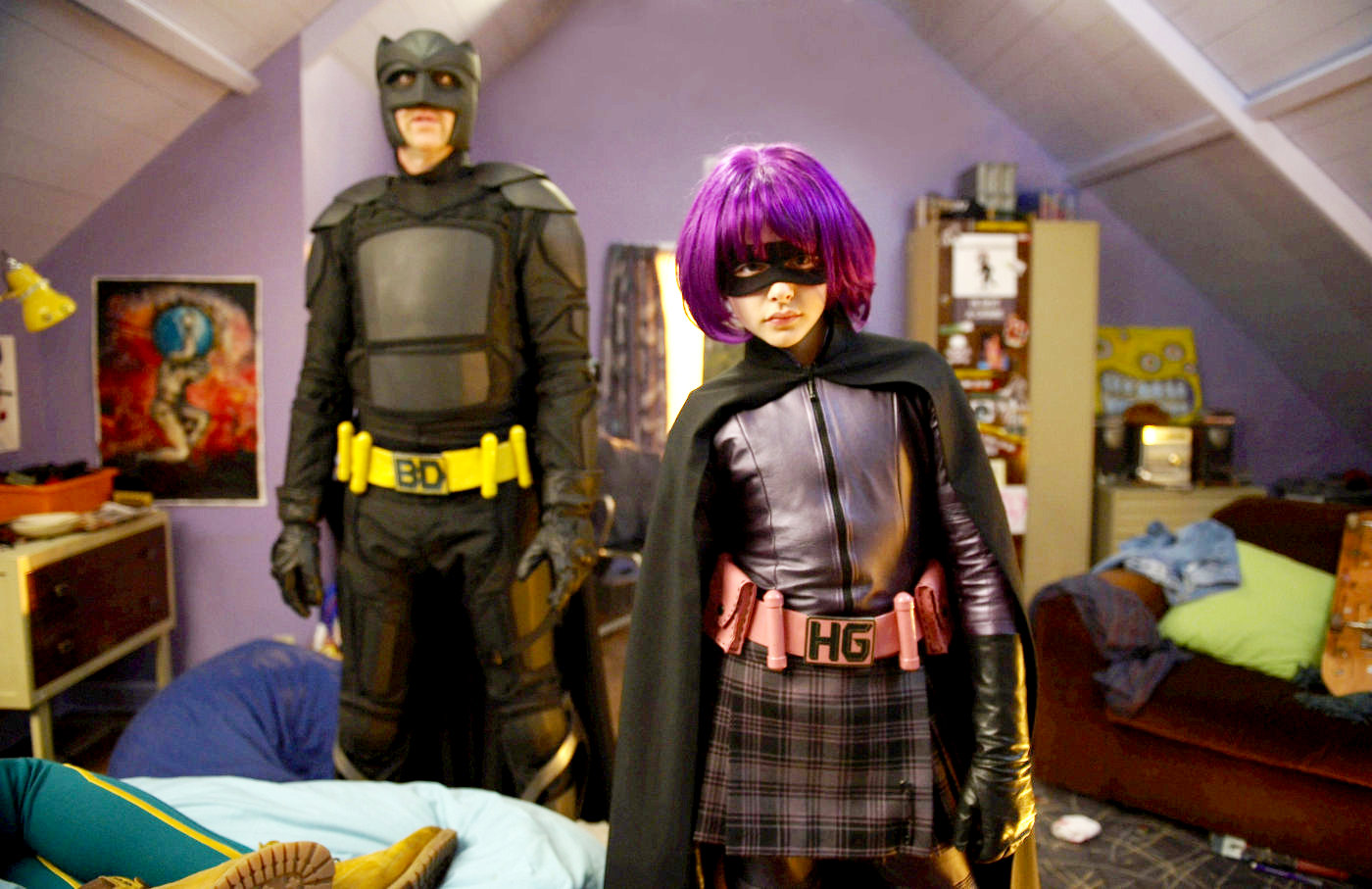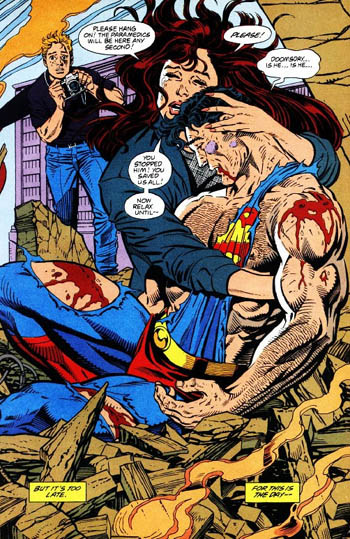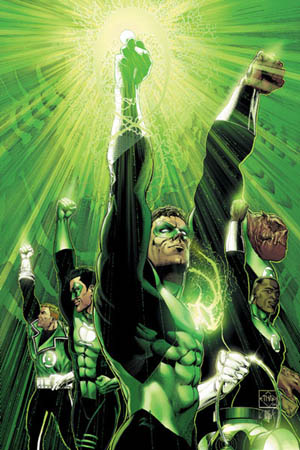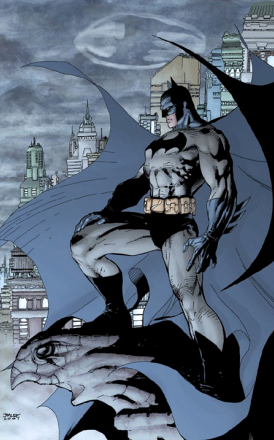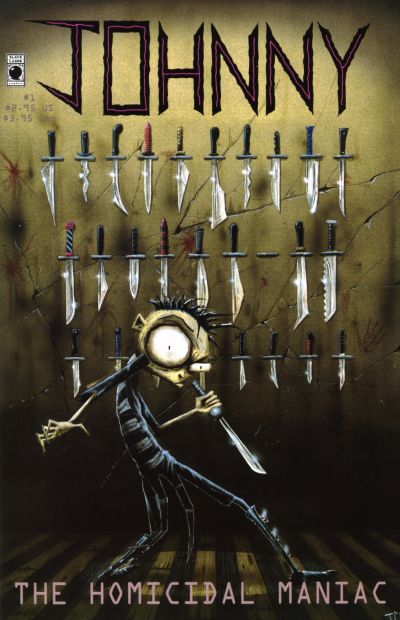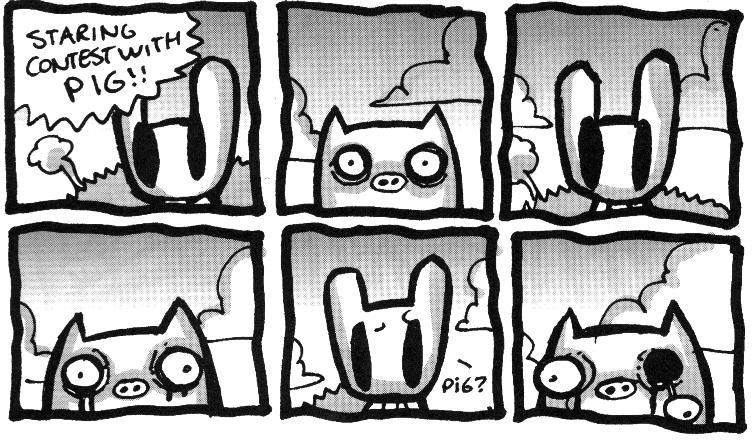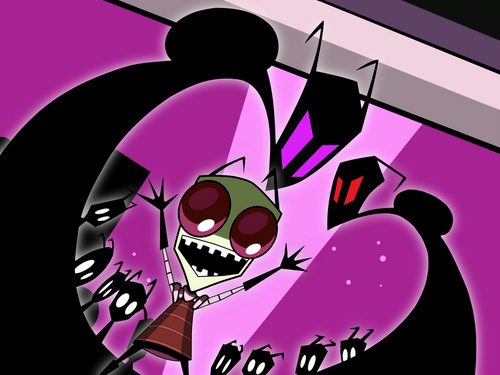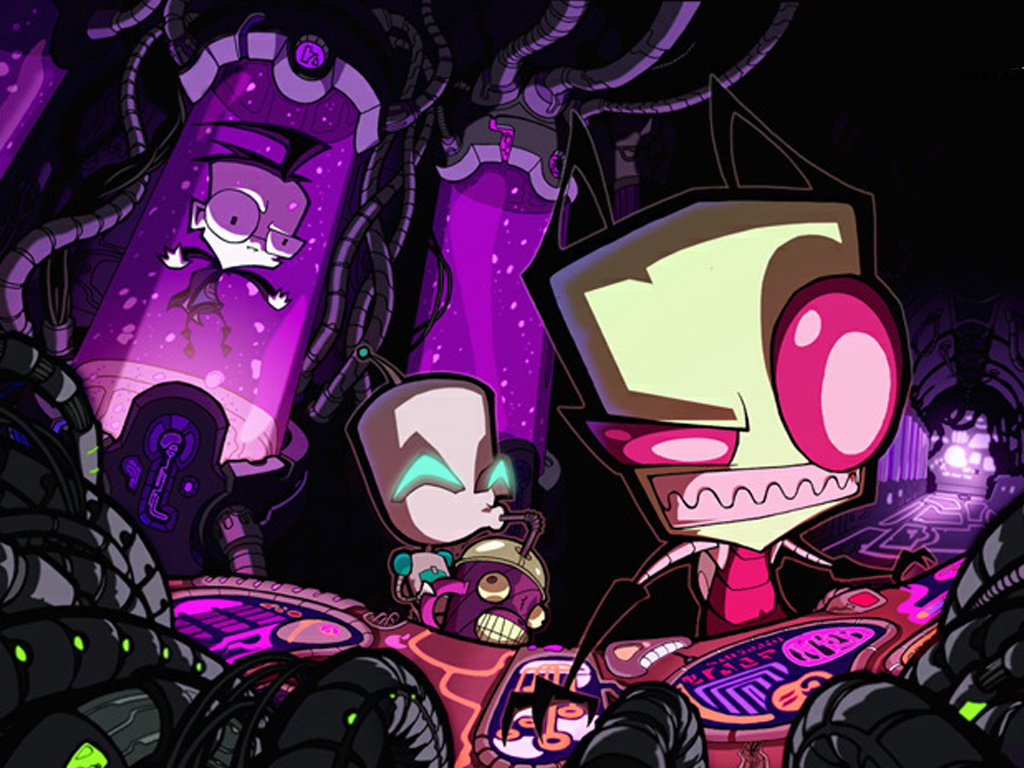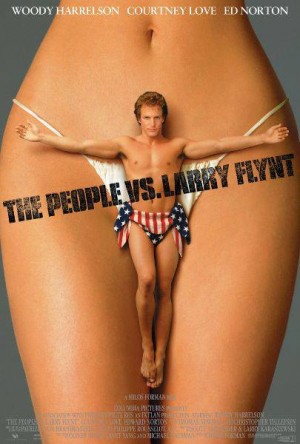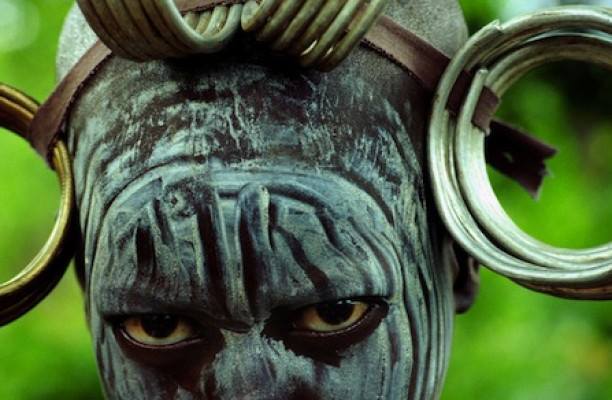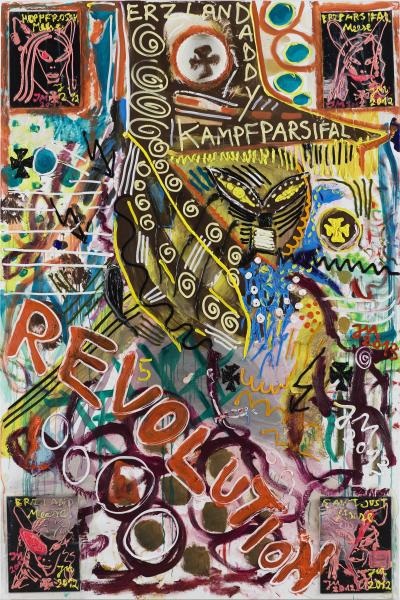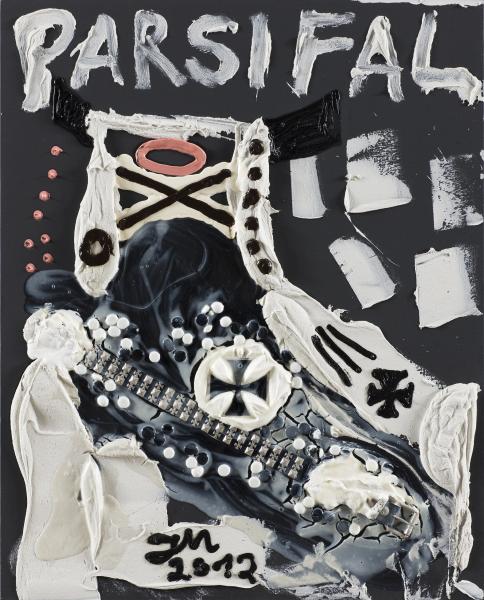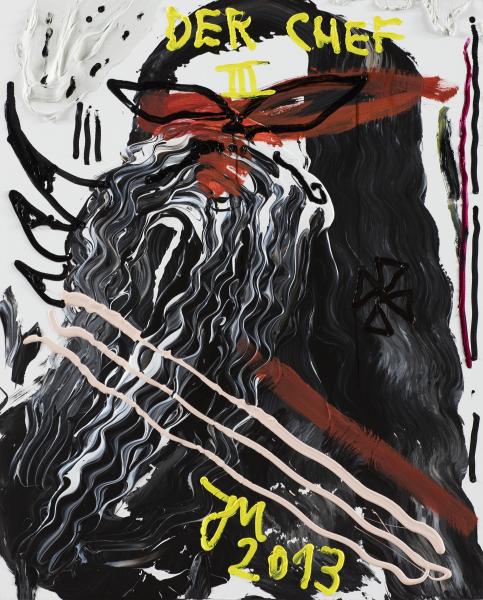Frank Darbo has it all. He’s married to beautiful Sarah, and marrying her is one of the two perfect moments of his life. The second moment is when a burglar ran past him, and he pointed the chasing police officer in the right direction. He does not want anything else.
PART TWO: SUPER
Perfect Moments
Except Sarah, a recovering heroin addict, falls into the clutches of Jacques – the suave, charming drug dealer. Unable to keep her from leaving him, Frank is left desolate. In desperation, he turns to God, and asks for a vision, a sign, anything to guide him. The answer comes to him in a dream: Frank is to become the Crimson Bolt, masked vigilante, and save Sarah. To this end, Frank first visits the local comic book store, where a power-charged clerk named Libby helps him conclude that one does not need superpowers to be a superhero. Thus, Frank purchases various items (American football guards, helmet, etc.) and puts together his costume. His weapon of choice: a wrench. His policy towards crime: zero tolerance. His catchphrase: “Shut up, Crime!”
Frank then proceeds to inflict his brand of justice upon the streets: a swift, merciless wrench blow to the head (or, in one case, a cinder block dropped from the second story fire escape.) The Crimson Bolt’s methods are effective, so effective, in fact, that after he gives a man brain damage for butting in line, and breaks the face of his wife in the process, the police begin the search for the identity of the violent lunatic loose in the streets. Prompted to take further action, the Crimson Bolt launches a one-man raid of Jacques’ premises as he’s using Sarah as a test subject for a new brand of heroin he’s going to distribute. With Jacque’s henchmen and guards around, Frank barely manages to escape with a bullet in his leg. He goes to the only person whom he knows can help him: Libby.

Boltie © radiumradiator.tumblr.com
Upon discovering that Frank is the Crimson Bolt, Libby is beyond ecstatic. She quickly sets herself up to be Boltie, the Crimson Bolt’s kid sidekick (with a costume that resembles Jean Grey’s second “Marvel Girl” outfit.) The dynamic duo, after almost being killed by Jacques’ men, decide to up their operation and purchase a variety of firearms, dynamite, make pipe bombs, etc. They launch, this time, a two-hero raid of Jacques’ premises in the night of Jacques’ big deal. Libby dies by a shotgun blast to the head in the opening salvoes of their operation. This provokes Frank to go berserk and clean out the entire premises himself, kill Jacques after a one-on-one, and at long last, save Sarah.
Challenge for the Mind
Frank’s shift from Frank Darbo to the Crimson Bolt, the ordinary to extraordinary is akin to the tragic origin story of Batman, in fact, there are, despite the Crimson Bolt existing in a strange mesh of genres that includes comedy. Namely, Frank’s stability was, apparently, based almost solely on Sarah, and his marriage. The sudden relapse of Sarah into heroin abuse and his inability to save her from her addiction pushes Frank into an extraordinary sense of loss and depression. It is at that point that he admits to seeing hallucinations as a child. The “vision” he receives from “God” for him to become the Crimson Bolt is simply the first pointer towards an age-old theme in many superhero stories, but is the clearest in Batman. Bruce Wayne was transformed into a vigilante because of the loss of his parents, but the specific guise he dons is initially because a bat chose to fly in through the window as he’s contemplating his identity. He takes it as an omen and decides to become a bat. Likewise, Frank Darbo is transformed by the loss of the one person that he held dear above all else, and finds his “skin” when a lucid hallucination gives him the visage of the Crimson Bolt, in the form of his helmet.
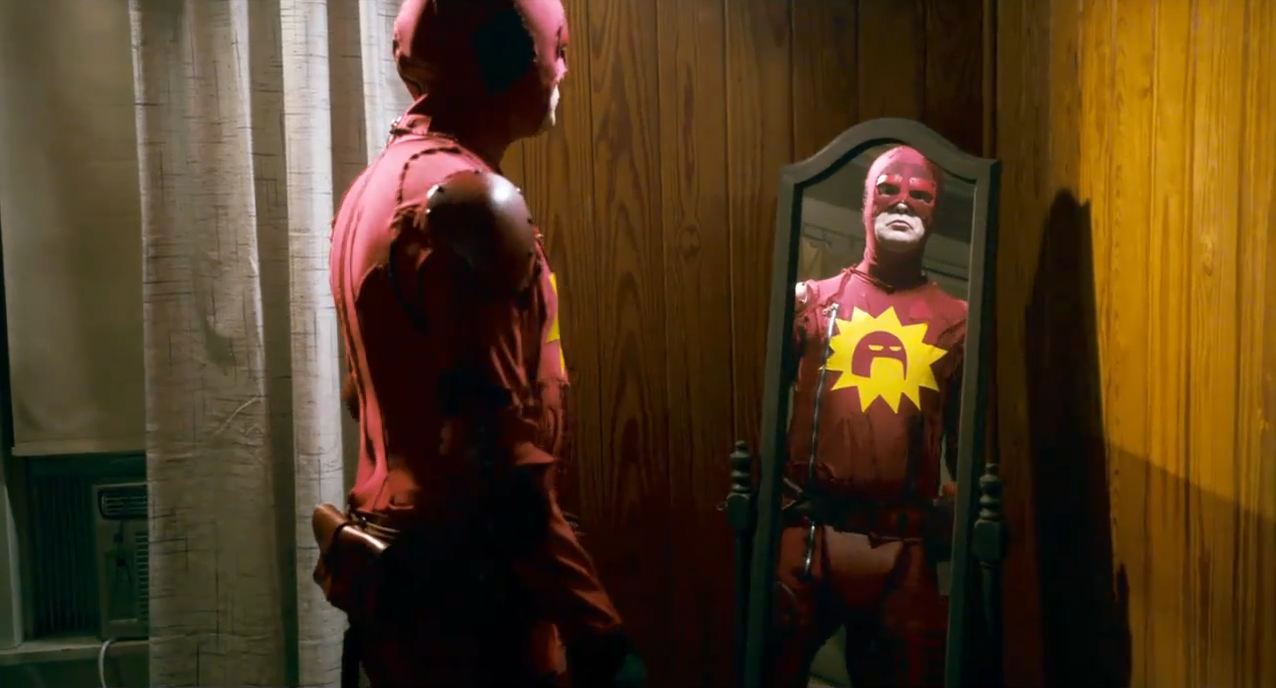
A still from the movie Super © lightsremoteaction.com
In another parallel, there is always a question about whether or not Batman himself qualifies as sane, not because he is driven to a point far beyond obsession, or because he devotes most of his time to crime-fighting. Those are perhaps questionable, but not to the point where we can deem him insane. Where the cup runneth over, however, is that while he could do it all in any black ops kind of outfit, he chooses to do it dressed up like a bat – furthermore, Bruce Wayne does not even exist, as he deems “the Batman” to be his true identity. This isn’t a clear-cut case where the Crimson Bolt is concerned, as Frank creates the Crimson Bolt to be an extension of himself, rather than a replacement, or a self that can force a senseless world to make sense. His sole mission begins as saving Sarah, but the path he paves towards that takes him down to a different, more over-arching thought: that society has certain rules that must be followed, and these rules are neither optional, nor subject to change, and trespasses must be punished. Shut up, crime.
This is clearly put forth at the end of Crimson Bolt’s showdown with Jacques. Jacques, down for the count, facing a knife-wielding Crimson Bolt, points out that Frank, at least partially unstable, has hospitalized people for butting in line. Enraged, Frank screams that you don’t butt in line, you don’t sell drugs, you don’t molest children – them’s the rules. The question shifts, as Jacques, naturally, wants to know if Frank thinks stabbing him to death is going to make a difference. “Super”s theme of self-righteous intervention becomes clear in the answer that Frank provides, which is “I can’t know that for sure, unless I try.” (and yes, after that, he proceeds to stab Jacques to death.)
But, the line isn’t so clear-cut. “Super” elaborates on the basic dichotomy of superhero fiction, that of being chosen versus choosing. To briefly expand, Superman is chosen, because his abilities are a by-product of where he is from, and what the solar radiation allows him to do. His powers are given to him. He is chosen. Since he is aware of this, he feels compelled to act. Batman, our main parallel with the Crimson Bolt, chooses. He chooses to act. The Crimson Bolt as an identity, a path, comes to Frank in a vision and he believes himself chosen. It takes him the completion of his quest (for which a hero is often chosen, as well) he comes to the very real conclusion that he was not “chosen,” because he wasn’t given anything – he chose. He chose to purposefully become the Crimson Bolt, to assume this separate identity.
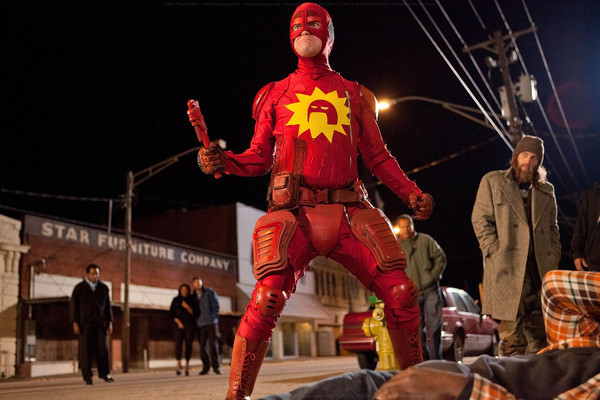
A still from the movie Super © radiumradiator.tumblr.com
Grey and Grey Morality: Ideation and Crossfire
As stated above, Frank, at one point, attempts a one-man raid on Jacques’ mansion, and escapes with a bullet in his leg. He wraps himself up in trash bags and stumbles into a flatwarming. Libby helps him, insofar as she is able, to wrap his leg up. At this point, another reality is observed in “Super”; Frank spends quite a bit of time recovering from the gunshot. In the meantime, Libby becomes obsessed with becoming the Crimson Bolt’s kid sidekick, citing such examples as Robin and Kid Flash as to the necessity of such a thing – an attempt to force the pure fiction into reality, as is with most flatscan heroes. The reality vs. fiction is further reinforced in practically the next scene, where Frank is trying to ease his leg back into walking (having still not recovered) but Libby is busy demonstrating her alter-ego Boltie’s costume. It’s akin to, we may note, Jean Grey’s second Marvel Girl outfit, and in her demonstration, aptly, “Boltie” strikes a few poses, one of them being similar to one of Jean-Grey-as-the-Phoenix’s trademark drawings.
Boltie is a testament to the very basic premise of a flatscan hero, the catalyst of the personification: ideation. Libby is shown to be even more unstable than Frank, and as such, her ideation is stronger. She practically forces the idea of a kid sidekick on Frank, pushes her fiction through Frank’s already shaky reality. The dangers of flatscan heroism ideations are shown almost immediately: the first act of Boltie is, after being bored with Frank’s style of “hiding behind a dumpster and waiting for crime to happen” is to point out that he knows a guy who keyed her friend’s car. They find his house, walk in, and in the ensuing struggle, Boltie smashes a crystal vase over the head of the criminal – Frank barely stops her when she, completely lost in the moment, proceeds to pick up a nearby, heavy, decorative object to beat his brains in. However, it is quickly revealed that Boltie isn’t one hundred percent sure that the person they just assaulted was the actual culprit. The difficulty of ascertaining guilt is a problem plaguing formal law enforcement even today: things such as evidence, third-party witnesses are necessary, and procedure requires that a point “beyond a reasonable doubt” has to be achieved. But flatscan heroes, though attempting to observe the law, can not be expected to act in the same framework, because they simply do not have the resources. This lack, “Super” demonstrates, can easily translate into blurry aim.
The level of instability required to attempt at flatscan heroism has another dimension. As established, Boltie is dangerously unstable, too eager to lose herself in the fiction and unable to discern the consequences of her actions (not that Frank, the man who thinks a wrench blow to the head amounts to justice, fares any better, we might add.) This culminates in a rather difficult scene where Libby, now full-on Boltie, forces herself on a shocked Frank, practically raping him. That particular scene returns the focus briefly to the discussion of identity splitting. Libby claims that Frank Darbo, since he is married, cannot have sex with Libby (other reasons notwithstanding) however, The Crimson Bolt can have sex with Boltie. It is a very subtle, if disturbing way of putting forth the question of how separate can one person’s two identities, no matter in how different realms they exist, be. The scene, difficult to navigate as it is, makes it clear (and relevant) that Boltie’s interest isn’t in Frank, contributing to her fiction, once again, overwhelming reality. In fact, not very long into the act, she grabs Frank’s mask from nearby and tries (with Frank, somewhat vehemently, resisting) to put it on, stating that she “loves the way he looks in his mask.”
Of course, there is something to be said about harsh twists bringing back reality. Frank comes to the realization, after another, brief hallucination immediately following the above the scene, that he has fallen very far from his original goal of saving Sarah. This is what leads him to take the weapons (actual firearms) he has purchased with Boltie, and launch a two-hero assault on Jacques’ house just as a rather modest drug deal is going down. Fiction overwhelming the reality that pushed him into this mess in the first place becomes his wake-up call, as Frank seemingly realizes that there are certain realities that must be observed in order for his fiction to make sense. Which is akin, once again, to Batman, whose vigilantism was a fiction to distance himself from said realities, and force everything to settle into a context of his own making, a context that would allow him control.
Fictitious Enemy, Real Force
It must be mentioned here that the depiction of violence, in general, has a no-holds barred approach. The wounds Frank inflicts upon his targets during his initial stint as the Crimson Bolt are bared, blood and all – there is no question that he is severely injuring those he chooses to dispatch. This, in and of itself, serves a testament to the dichotomy of fiction vs. reality in a flatscan hero setting. Frank’s response to all but two instances of his own use of force is a kind of glee, and the ridiculousness of a man wearing a made-up costume and mask boldly declaring his catchphrase is the fiction that exists not side-by-side, but simultaneously as this reality. The two exceptions to this, the first of which is very brief, is when Frank shoots one of Jacques’ men after being attacked by him, to which his first response is shock.
The second instance marks a very sharp turn in the tone of the movie, which gradually breaks away from the comedy that is one of the primary genres prevalent. Not too long into their operation, the Crimson Bolt and Boltie, not ones for stealth, are detected. They are shot at, and two shots land. Frank survives due to the bullet landing on his bulletproof vest. Half of Boltie’s face gets blown clean off, and the image is shown enough to ram home the point that the fiction of the Crimson Bolt that has lightened the otherwise brutal, yet sparse violence, has been erased completely. Frank, flying into a rage, emerges from this an unstoppable force and begins to mow the grunts of Jacques and his buyer down, one by one by one. The movie pours salt into the wound by inserting Adam West-era Batman-esque sound effects to each and every kill, while showing the moment the bullets (or shotgun pellets) exited the wounds. Another scene, where Frank dispatches Jacques’ main man, Abe, occurs with Frank repeatedly ramming Abe’s head into the edge of the platform housing the nearby chimney. In short, “Super” constantly, yet subtly, reinforces the reality that violence, no matter what the context, cannot be taken lightly.
Next, on “Superhero vs. Realism: The Ultimate Battle”
On the final installment of this series, we will observe “Defendor” and its themes of what heroism entails, with a particular emphasis on heroic sacrifice not just in the sense of a single such act, but as a general way of existing, and what innocence means in a world of corruption. Be warned that the final installment concerns the highest level of reality and bares the limitations of a flatscan heroism attempt.







